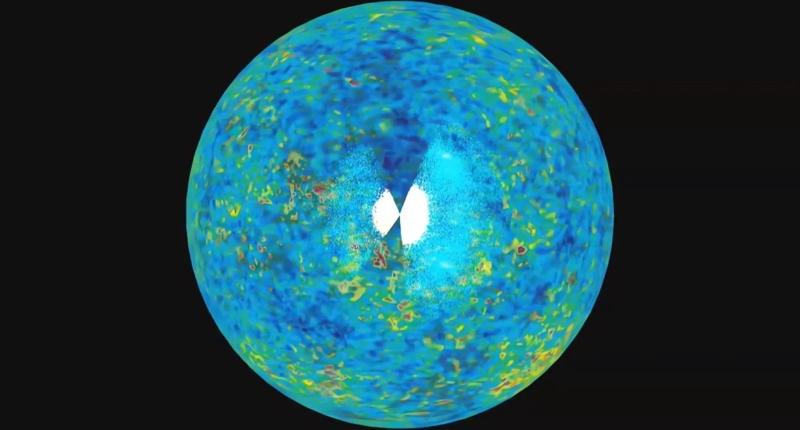The universe exhibits a heterogeneous distribution of cosmic material that resembles the distribution of blueberries in a muffin. Using simulations to study the cosmic web, researchers have quantified the universe’s relative disorder, revealing its fundamental structure. On the largest scales, the universe approaches hyperuniformity, while on smaller scales, it becomes almost antihyperuniform and strongly inhomogeneous. By analyzing the correlations of pairs of galaxies that are topologically connected to one another, researchers have developed a consistent and objective framework for measuring order, using statistical tools such as nearest-neighbor distributions, clustering diagnostics, Poisson distributions, percolation thresholds, and the pair-connectedness function. This interdisciplinary work has implications for both cosmology and condensed matter physics, offering potential future applications in exploring other features of the universe and various material systems on Earth.
Understanding the Cosmic Web: A New Perspective on the Fundamental Structure of the Universe
The universe is a vast expanse of galaxies that appear to follow a filamentary pattern known as the cosmic web. This distribution of cosmic material is similar to how blueberries are distributed within a muffin. Some areas contain clusters of material, while others are relatively empty. To gain a better understanding of the universe’s fundamental structure, researchers have turned to simulations to investigate the cosmic web.
Rather than treating the universe’s distribution of galaxies as a continuous distribution, researchers have used a collection of points, much like individual particles of matter in a material. By applying mathematical techniques developed for materials science, they were able to quantify the relative disorder of the universe, revealing its unique signature.
According to Oliver Philcox, a co-author of the study, “What we found was that the distribution of galaxies in the universe is quite different from the physical properties of conventional materials, having its own unique signature.”
The study, published in Physical Review X, was conducted by Salvatore Torquato, a Lewis Bernard Professor of Natural Sciences at Princeton University, and Oliver Philcox, a visiting Ph.D. student at the Institute for Advanced Study, who is now a Junior Fellow in the Simons Society of Fellows, hosted at Columbia University.
Using public simulation data generated by Princeton University and the Flatiron Institute, the researchers analyzed 1,000 simulations, each consisting of a billion dark matter “particles.” These clusters, formed by gravitational evolution, serve as a proxy for galaxies.
The researchers’ findings provide a new perspective on the heterogeneous structure of the universe, revealing its fundamental structure and shedding light on the distribution of galaxies within the cosmic web.
The largest structures in the universe can be visualized through data collected by the Sloan Digital Sky Survey and the Wilkinson Microwave Anisotropy Probe (WMAP). NASA, the University of Chicago, and the Adler Planetarium and Astronomy Museum provide stunning visualizations of this data, enabling scientists and the general public to better understand the cosmic web and the fundamental structure of the universe.
Understanding the Order and Disorder of the Universe on Different Scales
According to a recent study published in Physical Review X, the largest scales of the universe exhibit hyperuniformity, while on smaller scales, it becomes almost antihyperuniform and strongly inhomogeneous. This conclusion was reached by analyzing the correlations of pairs of galaxies that are topologically connected to one another using the pair-connectedness function.
The researchers used various statistical tools, including nearest-neighbor distributions, clustering diagnostics, Poisson distributions, percolation thresholds, and the pair-connectedness function, to measure order consistently and objectively. The findings of this interdisciplinary work, which combines cosmology and condensed matter physics, have future implications for both fields.
Although the degree of order and disorder depends largely on scale, the techniques developed for this study could be applied to other systems besides cosmology. For instance, it could be used to explore cosmic voids and ionized hydrogen bubbles in the universe or novel phenomena in various material systems on Earth.
Although more work needs to be done before these techniques can be applied to real data, this study provides a strong proof-of-concept with significant potential.
This research is a perfect example of the interdisciplinary work required to advance our understanding of the universe and provides a glimpse of the exciting discoveries that await us in the future.
Don’t miss interesting posts on Famousbio
